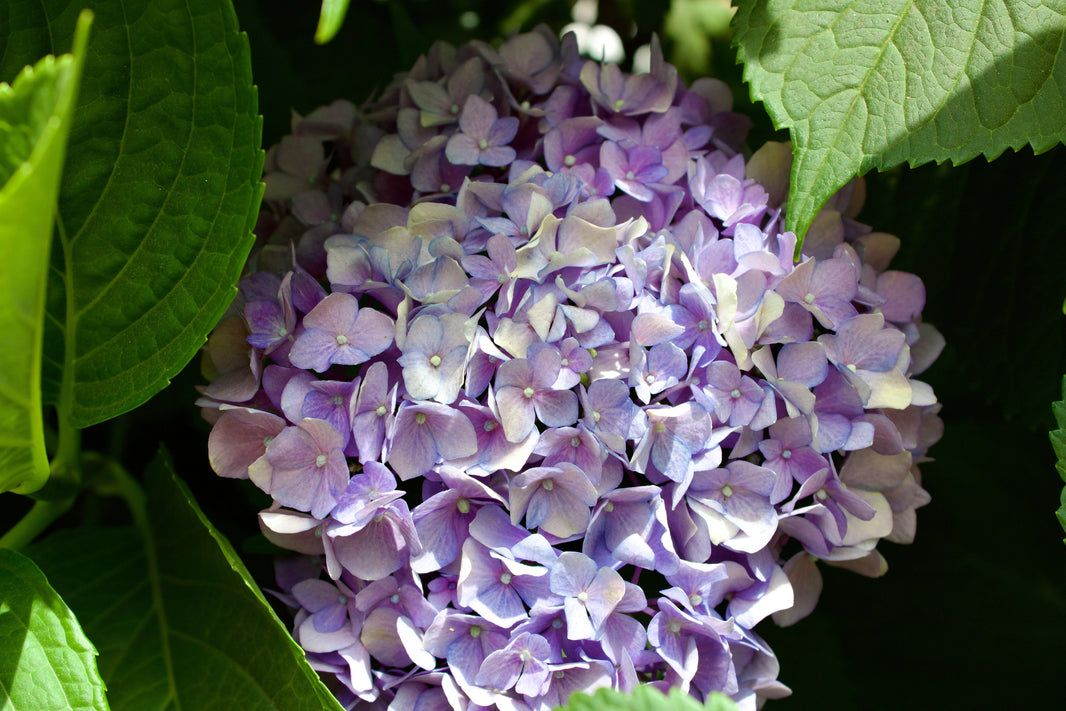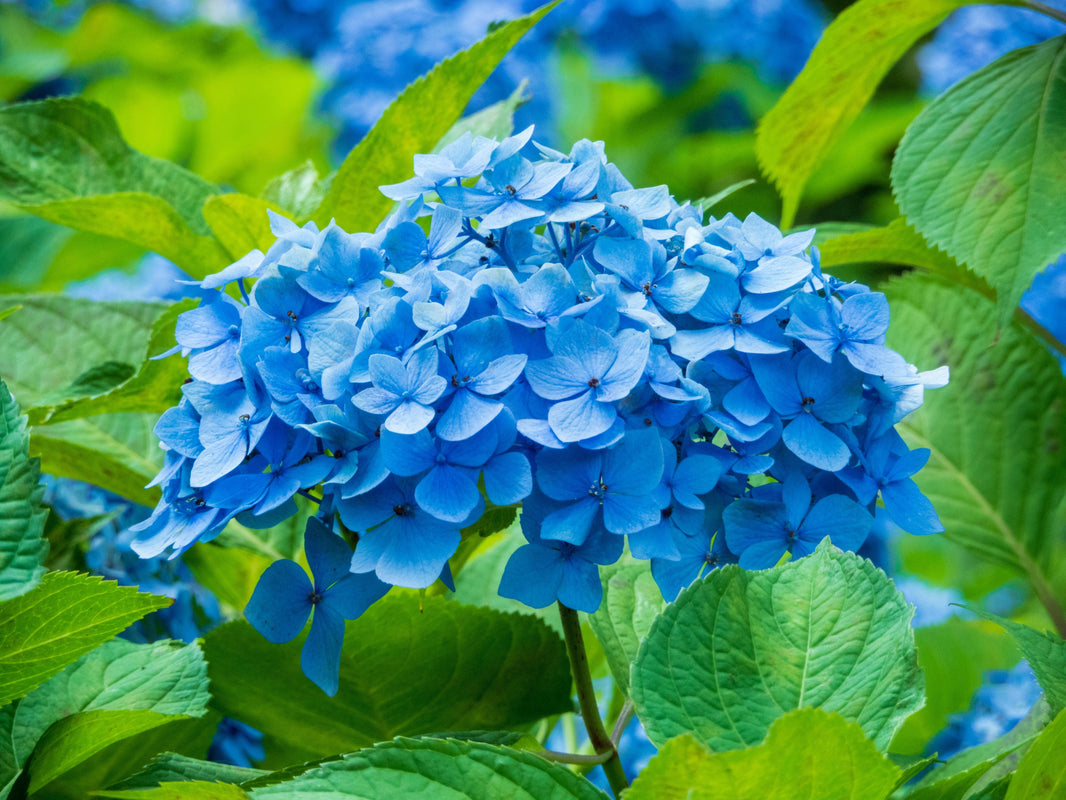The flower business has long been associated with beauty, emotion, and connection. From weddings to anniversaries, flowers play a central role in marking life’s most meaningful occasions. Yet, beyond their charm, the question arises—is the flower business truly profitable? Like any industry, the flower business has its own set of opportunities and challenges. For many, the allure lies in the idea of combining creativity with commerce. But is it really a lucrative path for those seeking to start a new venture?
Flower businesses, whether small boutiques or large-scale operations, require careful planning and management to succeed. Despite the demand for flowers year-round, profitability is not always guaranteed. Factors such as the cost of goods sold, operational expenses, and market competition all play a critical role. Understanding these elements is essential before engaging in the endeavor of selling flowers for profit.
For those considering entering the market, the appeal of running a flower business often lies in the ability to turn passion into profit. The sector offers opportunities for creative expression and building personal connections with clients. However, the path to profitability is not immediate or without effort. Can new entrepreneurs break through the crowded market?
When evaluating profitability, it’s important to consider the costs associated with sourcing and storing flowers, especially since they are perishable goods. Mismanagement can quickly turn a thriving business into a failing venture. Wholesale suppliers such as WholesaleFlowers.net often provide cost efficiencies, allowing businesses to secure quality flowers while protecting margins.
Additionally, the location of your flower shop and target market will significantly impact earnings. Urban stores may witness more foot traffic, while online marketplaces are ideal for entrepreneurs looking to widen their customer base. Ultimately, sustainability in the flower business relies on strategic decision-making and an understanding of the industry’s nuances.
This article dives into flower business profitability, exploring risks, challenges, and keys to long-term success. Whether you're looking to start a boutique shop or expand with online sales, the insights shared here will guide you toward making well-informed decisions in the flower trade.
Understanding Flower Business Profitability
Flower business profitability hinges on multiple factors, from cost control to sales strategies. One of the biggest hurdles is the perishability of flowers, which creates pressure for business owners to sell quickly. High inventory turnover rates are critical to minimizing waste and maximizing returns. Every bloom that goes unsold represents a sunk cost. Understanding how to manage inventory effectively is a foundational step toward sustainable profitability.
Another critical element involves the pricing strategy. Setting prices too low may attract customers but diminish profits, while pricing too high can drive potential clients to competitors. Striking the right balance requires diligent market research and an in-depth understanding of your target audience. For example, offering custom floral designs for weddings or luxury bouquets may appeal to high-income clients willing to pay a premium.
Labor costs also need to be accounted for, especially if your shop requires floral designers or delivery staff. The flower business is labor-intensive, and skilled personnel are often necessary to create high-quality arrangements. Keeping these costs in check without sacrificing quality can be tricky but crucial for ensuring profitability.
Another driving force in profitability is your ability to diversify revenue streams. Many flower shops supplement their income by selling additional products such as vases, greeting cards, or giftware. Some also diversify services by offering event planning or floral workshops, tapping into other lucrative opportunities. Considering such options can increase the bottom line dramatically.
Seasonality plays a major role in profitability as well. Valentine’s Day, Mother’s Day, and the wedding season generate significant revenue spikes, but slower periods can challenge sustained performance. Effective financial planning and sales forecasting help smooth out these inconsistencies across the year.
Online marketing and e-commerce platforms are increasingly contributing to profitability. With more people purchasing products online, having a robust online presence can increase customer reach and drive revenue. Websites and social media also allow businesses to promote special deals instantly, helping attract and retain customers.
Finally, one cannot overlook the significance of wholesale flower suppliers such as WholesaleFlowers.net. Partnering with reliable suppliers offering competitive rates is essential for reducing supply chain costs. The ability to buy “flowers in bulk” is not just a cost-saving strategy but a crucial part of scaling a flower business successfully.
Key Factors Influencing Profit Margins
Flower businesses rely on a range of operational and strategic factors that can either enhance or erode profit margins. Chief among these is the cost of acquiring flowers. Bulk purchasing through wholesalers like WholesaleFlowers.net is a common strategy for keeping expenses under control. However, paying attention to quality is equally important. Poor-quality flowers can tarnish a business's reputation, so balancing cost-efficiency with premium quality is key to maintaining profitability.
Operational costs, such as rent, utilities, and equipment, are pivotal in determining the viability of a flower business. A central location might attract more foot traffic but often comes with higher rental fees. Meanwhile, operating expenses like refrigeration units and delivery vehicles also need to be budgeted carefully.
Another factor that significantly influences profit margins is waste management. Because flowers have a limited shelf life, unsold inventory can lead to losses. Implementing demand forecasting systems and efficient stock rotation can minimize waste, preserving both resources and earnings.
Labor efficiency is another area with room for improvement. While hiring skilled florists is necessary for crafting stunning arrangements, automation in areas like order processing and logistics can reduce staffing requirements and associated costs. Many successful flower businesses today integrate technology like online ordering systems to improve efficiency.
The market pricing strategy also plays a huge role in influencing profit margins. Businesses must strike a balance between affordability and retaining decent profit margins. This often means studying competitors, understanding customer willingness to pay, and positioning products at the right price point.
Marketing carries its weight in determining business success. A poorly marketed flower shop may struggle to attract new customers, while those with well-executed campaigns can see high returns. Local advertising, collaborations with event planners, and online promotions work well for exposing the brand to a broader audience.
Beyond these tangible elements, intangibles also factor into profitability. A reputation for outstanding customer service can help retain clients and inspire long-term loyalty. With a robust referral network and great reviews, flower businesses can steadily increase profit margins despite seasonal fluctuations or temporary setbacks.
Finally, a shift toward eco-friendly practices can influence long-term profitability. By sourcing sustainably grown flowers and reducing plastic in packaging, businesses appeal to environmentally conscious consumers. This ethical approach not only enhances the brand’s image but also opens doors to premium pricing opportunities.
Risks and Challenges in the Flower Industry
Running a flower business can be incredibly rewarding, but it’s not without its risks. One of the primary challenges is managing perishability. Flowers have a limited shelf life, and ensuring they remain fresh from the supplier to the customer is a critical task. Without proper handling, thousands of dollars in inventory can be lost within days. This makes quick turnover and efficient logistics essential for success.
Another significant hurdle is market saturation. Many local markets are crowded with florists, big retailers, and even grocery stores offering flowers at lower prices. Competing in this space requires exceptional quality and outstanding customer service to stand out. Additionally, building partnerships with event planners and wedding organizers can help tap into higher-value markets.
Seasonal fluctuations pose another challenge. While holidays like Valentine’s Day and Mother’s Day can drive immense sales, off-season months may leave businesses struggling to make ends meet. Successful flower businesses need to plan ahead to weather these slow periods. Diversifying product offerings, like selling plants or gift items, can help stabilize revenue.
Labor costs are a significant factor as well. Creating custom arrangements requires skilled florists who understand design principles and customer preferences. However, training and retaining experienced staff can be expensive. Additionally, finding part-time help during peak seasons without compromising quality adds to operational challenges.
Fluctuations in supply prices, often influenced by weather or regional unrest, can disrupt profitability. A sudden increase in the cost of roses from suppliers may not always translate to higher retail prices, squeezing profit margins for business owners. Wholesale partnerships with reliable suppliers, like WholesaleFlowers.net, ensure steady pricing and quality.
Consumer preferences play a role in shaping risks too. Trends like eco-friendly bouquets, sustainable packaging, or locally sourced blooms require businesses to adapt. Ignoring these shifts can cause a loss in market relevance. Staying informed and agile can help mitigate this risk and keep customers engaged.
Lastly, advertising and marketing expenses weigh heavily on small business owners. Attracting new customers and retaining them demands innovative campaigns, often on limited budgets. Leveraging social media, collaborations, and email marketing can help overcome this challenge in a cost-effective manner.
Marketing Strategies for Flower Businesses
Effective marketing is the backbone of a successful flower business. Building a strong brand identity starts with a memorable name and a clear value proposition. Whether you market yourself as the go-to florist for elegant weddings or a haven for fresh blooms delivered daily, your branding should reflect what sets you apart.
Social media platforms like Instagram and Pinterest are essential for flower businesses. Visuals are powerful in this industry, and platforms that focus on imagery allow you to showcase your work creatively. High-quality photos of arrangements, behind-the-scenes videos, and customer testimonials can attract organic engagement and build trust.
Local SEO strategies are equally vital. Most flower businesses cater to a specific geographic area, making it critical to appear in local search results. Optimizing your Google Business Profile, gathering reviews, and using location-based keywords on your website will help you reach nearby customers. Keywords such as "flower business profitability" can also tie into blog posts to enhance your content's discoverability.
Email marketing remains a proven method for staying connected with past customers. Sending curated newsletters featuring seasonal offers, care tips, or holiday reminders can keep your business top-of-mind. Including exclusive discounts or pre-order incentives is a great way to drive recurring sales.
Collaborations with other local businesses can also expand your reach. Partnering with wedding venues, event planners, or even bakeries can introduce your flower arrangements to new audiences. This strategy works especially well during peak seasons when fresh flowers are in high demand.
Promotions and giveaways are effective at engaging your online community. Hosting contests that encourage followers to tag friends or share your posts can exponentially grow your audience. For instance, offering a free bouquet to a randomly selected participant gives them a glimpse of your quality and increases your visibility.
Another strategy is to rely on storytelling through your marketing. Share the story of how you source your flowers, the design process, or moments when your arrangements became part of a special occasion. Connecting emotionally with customers can turn one-time buyers into loyal advocates.
Finally, paid advertising can give your business a much-needed visibility boost. While organic strategies take time to grow, targeted ads on platforms like Facebook and Google allow you to reach a broader, more filtered audience. Invest in these campaigns during high-demand times for maximum results.
Seasonal Trends and Their Impact on Sales
Seasonality has a profound impact on flower businesses. Understanding these fluctuations can make the difference between thriving and merely surviving. Key holidays such as Valentine's Day and Mother’s Day are notorious for driving a large percentage of annual sales for florists. To maximize earnings during these periods, be prepared with ample inventory, staff, and marketing campaigns targeting early buyers.
Weddings provide consistent seasonal demand as well. Spring and summer months often usher in a high volume of weddings, creating opportunities for bulk flower sales. Offering customizable package deals for couples allows businesses to encourage higher spending while meeting customer needs.
Weather patterns significantly influence the flower industry. A harsh winter may restrict supply and spike prices for certain blooms. Conversely, mild weather can result in an overabundance, driving prices down for wholesalers and posing challenges to retail-level profitability.
Seasonal trends also influence consumer preferences. Fall may usher in a demand for bouquets with warm-toned flowers like sunflowers or asters, while spring is synonymous with pastel arrangements featuring tulips and lilies. Stay ahead by offering collections tailored to these preferences throughout the year.
Special events like graduations and anniversaries are less bound by the calendar but still contribute to seasonal spikes. Staying attuned to community celebrations and promoting your services as a floral partner can align your business with these opportunities.
Diversification can help mitigate slow periods. During the off-season, consider expanding offerings to include workshops, home decor items, or low-maintenance companion plants. Engaging customers year-round ensures steady cash flow while building relationships that lead to loyalty.
Online trends also shape seasonal purchasing patterns. Subscription models for monthly flower deliveries have gained popularity, creating opportunities for consistent income regardless of specific seasons. Combine this with digital marketing campaigns for optimal results.
The Importance of Customer Relationships
Building strong customer relationships is at the heart of a flourishing flower business. Personalization plays a key role in strengthening these bonds. Whether it’s a note accompanying a bouquet or tailoring an arrangement to reflect specific sentiments, small touches go a long way in making customers feel valued.
Attentive customer service is vital too. Prompt responses to inquiries, transparency about pricing, and timely deliveries shape the customer experience. Positive interactions often translate into repeat business and positive word-of-mouth referrals.
Loyalty programs can also reinforce relationships. Offering rewards like discounts on future purchases or special gifts creates an incentive for customers to return. These programs are particularly effective when tied to key occasions like anniversaries or birthdays.
Social media interactions further strengthen ties. Engaging with customers in the comments section of your posts, resharing user-generated content, and addressing reviews foster a sense of community. Collaboration and gratitude can turn followers into longtime supporters.
Feedback loops are another effective way to nurture relationships. Regularly soliciting reviews and incorporating customer suggestions into your offerings prove that you value their input. For example, if customers request eco-friendly arrangements, introducing these options shows you care about their priorities.
For businesses serving weddings or corporate events, follow-ups can cement lasting partnerships. Sending thank-you notes or exclusive discounts for future collaborations encourages repeat opportunities while leaving a positive impression.
Finally, resolving issues promptly and gracefully can turn potentially negative experiences into stories of outstanding customer care. For instance, replacing a damaged bouquet underscores your commitment to quality and customer happiness, further solidifying your reputation.
Scaling Your Flower Business for Long-Term Success
Achieving long-term success in the flower industry requires more than creativity and passion. It demands strategic planning and scalability. Expanding your product offerings is one way to scale. Add-on products such as vases, gift baskets, or chocolates can significantly boost your average order value.
Investing in technology simplifies operations and prepares your business for growth. Implementing software for inventory management, customer relationship tracking, and online ordering improves efficiency, making it easier to handle higher demand.
Diversifying sales channels also provides scalability. Selling through physical storefronts, e-commerce platforms, and third-party marketplaces allows you to reach a broader audience. Partnerships with services like WholesaleFlowers.net ensure access to fresh stock as demand rises.
Hiring and training a reliable team is essential. A growing business needs skilled staff capable of managing larger orders while upholding quality. Creating an enriching workplace culture helps attract and retain top talent as you expand.
Franchising or licensing your brand is another potential pathway. If your business model proves successful, replicating it in new markets allows for rapid scaling with reduced risk. Providing franchisees with best-practices and supplier connections adds value for both parties.
Marketing efforts must grow along with your business. Investing in larger campaigns, expanding social media presence, and hosting community events elevate your brand and attract regular customers.
Finally, keeping an eye on financials as you scale is non-negotiable. Continuously track your profits, cost of goods, and operational expenses to ensure growth doesn’t come at the expense of profitability. Strategic reinvestment in the business keeps a sustainable pace of expansion.
The flower business can indeed be profitable, but success relies on understanding and mitigating its unique challenges. Sourcing wholesale flowers plays a key role in keeping costs manageable, which leads to higher profit margins. For businesses looking to thrive, WholesaleFlowers.net offers an unbeatable selection of fresh blooms.
From managing inventory risks to establishing customer loyalty, every aspect plays a role in defining profitability. However, by planning for seasonal trends, focusing on marketing, and diversifying offerings, you can carve out a sustainable business model.
Additionally, for businesses aiming to scale, strategic partnerships enhance both reliability and quality. Those investing wisely in customer relationships reap long-term rewards and a steady flow of recurring business. And don’t forget to explore our selection of flowers in bulk to fill all your floral needs.
By focusing on these critical factors and partnering with trusted suppliers like WholesaleFlowers.net, you’ll be well on your way to building a successful, thriving flower business. With the right strategies and consistent effort, the dream of running a profitable flower business can become a blooming success.






